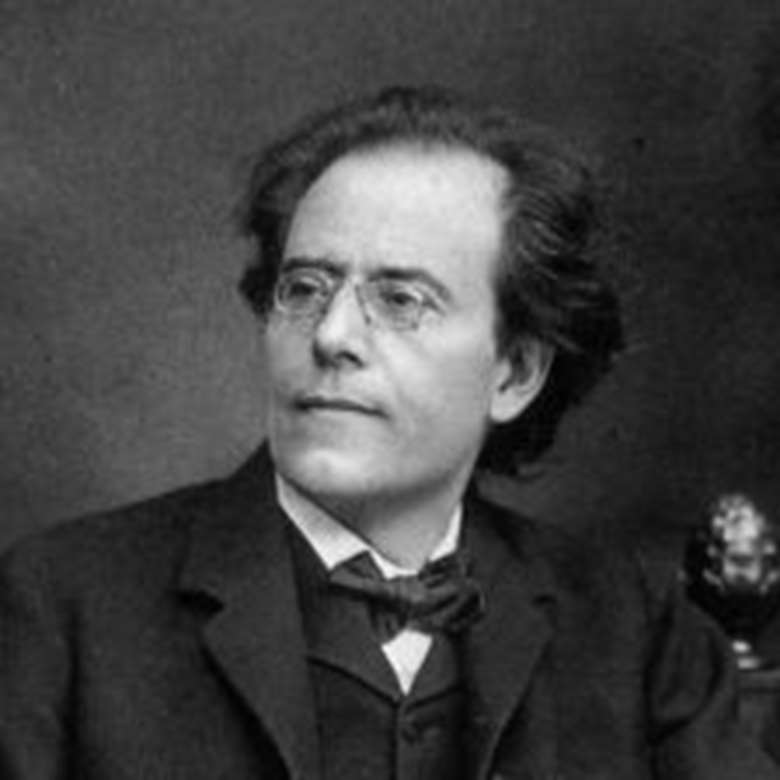Mahler's Symphony No 1, by Sir Charles Mackerras
Gramophone
Thursday, January 1, 2015

This symphony was the one to which Mahler attached the greatest importance – he conducted more performances himself of this than he did of any of his other, later works. Originally it had five movements but the original second movement, 'Blumine', was soon cut out because it didn’t really match thematically with the rest of the work. The other four movements are united by a descending fourth motif – it runs right through all of them.
The opening of the piece is a huge nature description, with that long, long octave played by the strings, then the first appearance of the descending fourth motif in the woodwind. The sounds of nature – cuckoos – and the quick fanfares from the offstage hunting horns are completely unrelated to the general tempo. When the movement hits a faster tempo we have the first reference to one of the Wayfarer songs – 'Ging heut’ Morgen übers Feld' – which provides the main theme of the allegro part of the movement. Two more songs from that cycle of four are quoted subsequently, one in the Trio of the Scherzo and one in the middle of the extraordinary third movement. The third movement has a lot of cheeky, almost evil, music in it. The harmonies are grotesque and the orchestration is very harsh. I believe Mahler had in his mind the funeral cortège of a hunter, with animals walking behind the coffin, rejoicing in the fact he has died. Very unusually, the movement begins with a solo double bass, playing a theme we know as 'Frère Jacques'. This turns into a 'round', as the instruments come in one after another. On top of that there is a peculiar parody on the oboe, then on the E flat clarinet. Again, the tone is harsh, almost ugly. It’s an extremely strange movement which was violently attacked by the critics at the time, especially in Vienna, for they believed such things were not appropriate in a symphony. They could be very conservative and believed a symphony must be a very classical piece of music, within which any description of nature or actions was unsuitable. César Franck was even denounced for using a cor anglais in his symphony.
For the last movement an even bigger orchestra is required. It takes us from Inferno to Paradise, starting off in an infernal way, using that motif, up or down a fourth. Sometimes the motif is used as a menacing call but later on it is used as a soft, gentle, noble theme, going into a chorale theme, which Mahler uses very cleverly. The first time it comes, it is stated very softly in the brass, which sometimes are muted. Mahler was always changing the orchestration in his pieces, and there are versions of this piece that have the horns muted in this passage and also others where they are open horns, playing very quietly. It is a most remarkable sound. The call starts off in C major then suddenly shifts up a tone to D major, the main key of the symphony. It is one of the great moments of the symphony. At the very end the chorale theme comes back and Mahler writes that the horn-players should all stand up and make the greatest possible noise. This effect is used more often in jazz bands these days. I once conducted the piece at the Aspen Festival in Colorado, where a horn colloquy was also going on. In the final rehearsal and the performance we had about 30 horns playing this in unison.
The music gets faster and faster, leading to a tremendous climax, as we go through F minor to D flat major, via C major to D major. On our recording, to double the horns, we had our eight horn players re-record the passage, so they could double themselves up.
I very much like Bruno Walter’s recording of the piece. He knew Mahler and understood what his music really meant. He brings out all the beauties and subtleties of Mahler’s music. There is also a very interesting interview with him on the CD, in which he talks about how Mahler behaved with orchestras. He seemed always to be changing his mind about how things should go and kept on altering the orchestration in order to make the music clearer. Mahler wrote huge works but he also had a kind of mania about clarity. Everything had to be audible. He wanted the listener to hear every instrument and relish every detail.
Interview by Michael McManus (Gramophone, March 2010)
Explore Mahler's symphonies with the leading Mahler conductors:
Symphony No 1, by Charles Mackerras
Symphony No 3, by Lorin Maazel
Symphony No 4, by David Zinman
Symphony No 5, by Simon Rattle
Symphony No 6, by Christoph Eschenbach
Symphony No 7, by Valery Gergiev
Symphony No 8, by Michael Tilson Thomas
Symphony No 9, by Esa-Pekka Salonen







